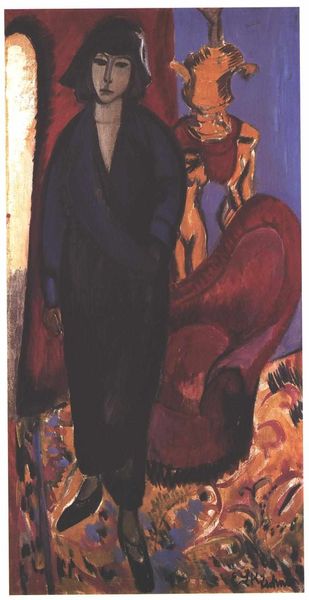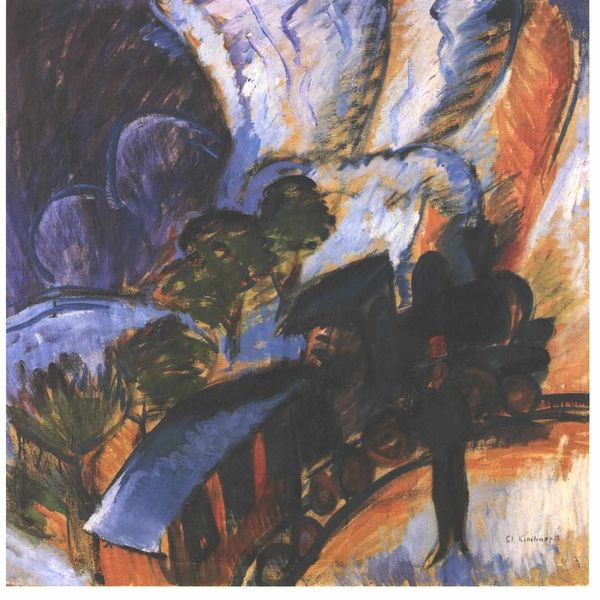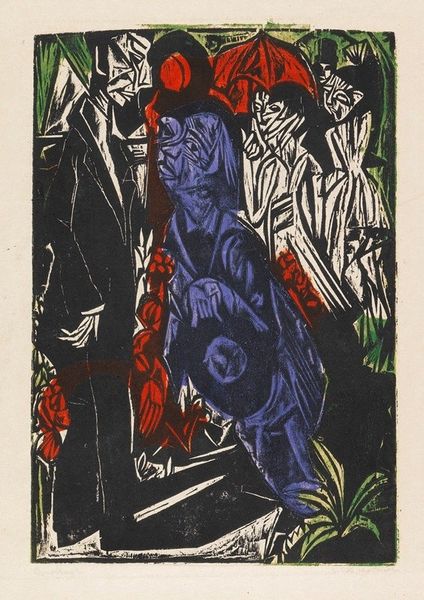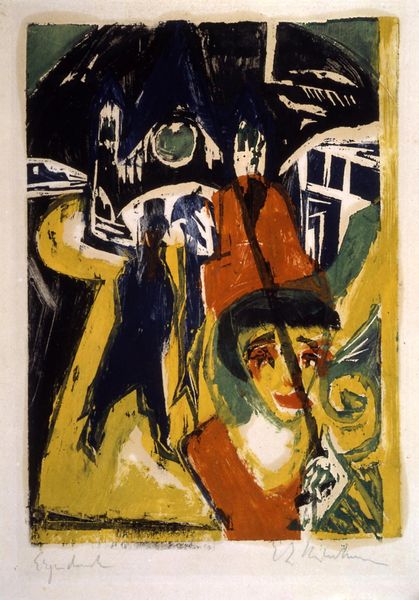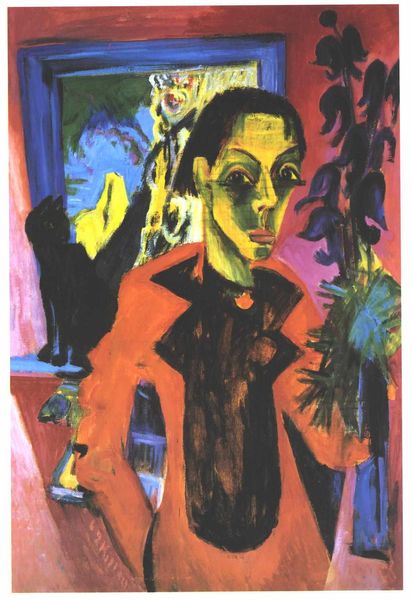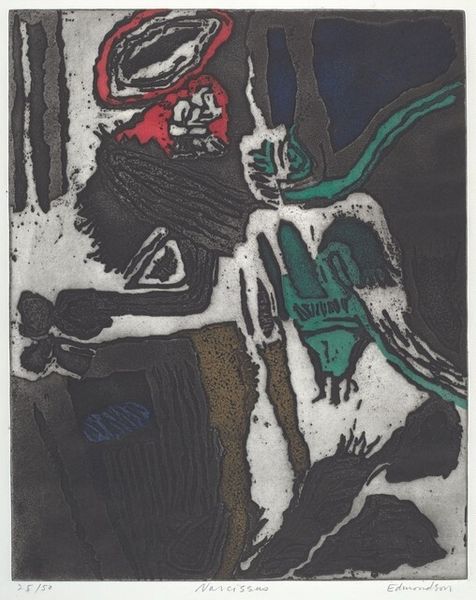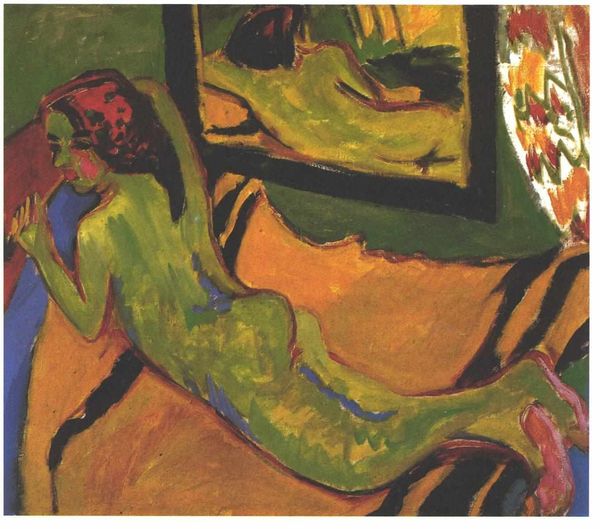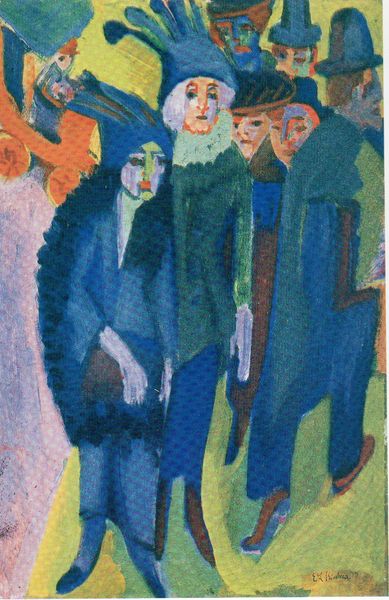
#
tree
#
impressionist
#
abstract painting
#
impressionist painting style
#
impressionist landscape
#
fluid art
#
acrylic on canvas
#
square
#
painting painterly
#
munch-inspired
#
impressionist inspired
#
street
#
expressionist
Copyright: Public domain
Curator: I’m immediately struck by the ominous mood emanating from Kirchner’s *Friedrichstrasse, Berlin.* A crowd surges forward, faces masked in shadow, cloaked in an almost uniform darkness, yet vibrant underneath. Editor: Ominous, yes, but perhaps a purposeful griminess. Notice the rapid, almost violent, strokes of paint. I mean, it's ostensibly acrylic on canvas, a relatively new and pliable medium for the time, allowing him that freedom. Curator: Oh, absolutely! He throws convention to the wind. I imagine he felt this place and wanted to express what it meant, he needed that pliable media. You know, this captures the frenetic energy of pre-war Berlin, like a dance on the edge of a precipice, teetering before disaster. Editor: Teetering, right. Look at the material choices too: acrylic. These weren't expensive, precious pigments; it's a material reflective of a rapidly changing, mass-produced world. There's no gilded frame romanticizing this; it’s a gritty portrayal, materials included. Curator: I completely see it, yes! And those women, those faces staring directly at the viewer; there’s something predatory in their gaze, perhaps echoing a sort of societal decadence lurking beneath the surface. There's this beautiful juxtaposition in what they are representing compared to the new means they are represented with! Editor: Precisely! The very means of production speak volumes about consumption and class, darling. It reflects the shifting landscape of artistic expression in the face of industrialization, while it points directly at this idea of who and why these faces can even be expressed. Curator: Ultimately, Friedrichstrasse becomes more than a mere street scene. It's a reflection of anxieties and underlying excitement of the modern era and that speaks to the test of time. A fascinating, and chilling snapshot, wouldn’t you agree? Editor: Definitely chilling, but it also highlights the accessibility of art in the 20th century as materials broadened; this invites a reevaluation of what’s valued aesthetically, or, maybe even more critically, *who* gets valued aesthetically! It's about materials as much as its meaning.
Comments
No comments
Be the first to comment and join the conversation on the ultimate creative platform.


